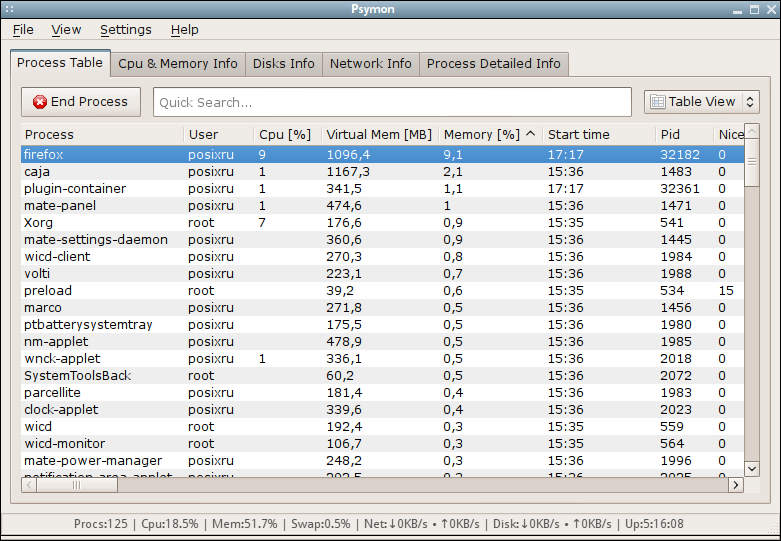


Log in to the remote server, and start the glance program in server-side mode. This means you can run glances on multiple remote servers and connect them to your primary client, and all servers must have Glances installed.
#Python system monitor how to#
killall glances How to Run Client-Server ModeĪnother great feature of the Glances program is that it provides client-server architecture.

If you need to kill the processors in background mode, type the following to kill all active glances sessions. To open the web browser for the program, enter your IP server address with the default port 61209 as an example.
#Python system monitor password#
You can set a password for the web-based monitor by typing the following command. This may look a little confusing, using the server’s IP address. Note that you will most likely see in the terminal display “Glances Web User Interface started on ” when entering this command. To initiate the browser function in the program, do the following. Glances can do this for users who require remote monitoring, as all required dependencies are installed by default. The following list commands you can use in Glances to configure, find and show what you are looking for. sudo systemctl restart glances Command Options Ideally, you should restart the service also using the following command. $ glances -stdout-csv now,cpu.user,mem.used,loadĭisable some plugins (comma separated list):Įnable some plugins (comma separated list):Īs mentioned at the start of the tutorial, Glances has the color for alerts. $ glances -stdout now,cpu.user,mem.used,loadĭisplay CSV stats to stdout (all stats in one line): Start a Glances XML-RPC server (server mode):Ĭonnect Glances to a Glances XML-RPC server (client mode):Ĭonnect Glances to a Glances server and export stats to a StatsD server (client mode):ĭisplay stats to stdout (one stat per line): Monitor local machine and export stats to a InfluxDB server with 5s refresh rate (standalone mode): $ glances -export csv -export-csv-file /tmp/glances.csv Monitor local machine and export stats to a CSV file (standalone mode): Only start RESTful API (without the WebUI): Monitor local machine with the Web interface and start RESTful server: Strftime format string for displaying current date inĭisplay all Glances modules (plugins and exporters) and exit: theme-white optimize display colors for white background sparkline display sparklines instead of bar in the curses
#Python system monitor free#
fs-free-space display FS free space instead of used fahrenheit display temperature in Fahrenheit (default is Celsius) diskio-iops show IO per second in the DiskIO plugin diskio-show-ramfs show RAM Fs in the DiskIO plugin b, -byte display network rate in byte per second Hide kernel threads in process list (not available on issue test all plugins and exit (please copy/paste the Separated list of plugins/plugins.attribute)ĭisplay stats to stdout, csv format (comma separated stdout STDOUT display stats to stdout, one stat per line (comma process-long-name force long name for processes name process-short-name force short name for processes name Set the process filter pattern (regular expression) f PROCESS_FILTER, -process-filter PROCESS_FILTER q, -quiet do not display the curses interface open-web-browser try to open the Web UI in the default Web browser w, -webserver run Glances in web server mode (python3-bottle needed, t TIME, -time TIME set minumum refresh rate in seconds SNMP authentication key (only for SNMPv3) u USERNAME_USED use the given client/server username password define a client/server password username define a client/server username p PORT, -port PORT define the client/server TCP port īind server to the given IPv4/IPv6 address or hostname browser start the client browser (list of servers) export EXPORT enable export module (comma separed list)Ĭonnect to a Glances server by IPv4/IPv6 address or Sort processes by: cpu_percent, memory_percent, To bring up the help command, enter the following. However, you can set this much higher if required. This now changes the default time delay from 1 second to 3 seconds. By default, the timer is 1, but you can change this as an example: glances -t 3 Next, you can alternatively open Glances using a timer that may help systems in intensive tasks. To exit the Glances, use the following command.


 0 kommentar(er)
0 kommentar(er)
